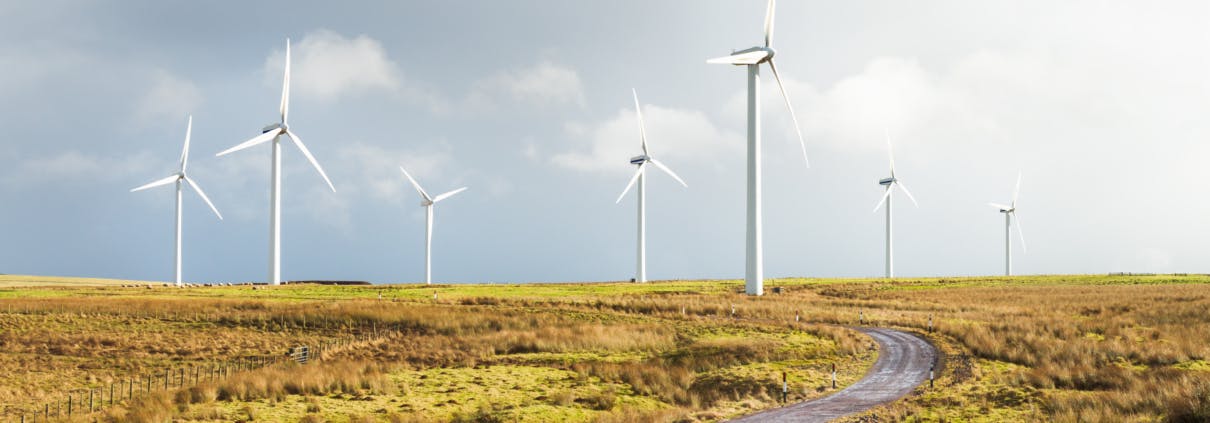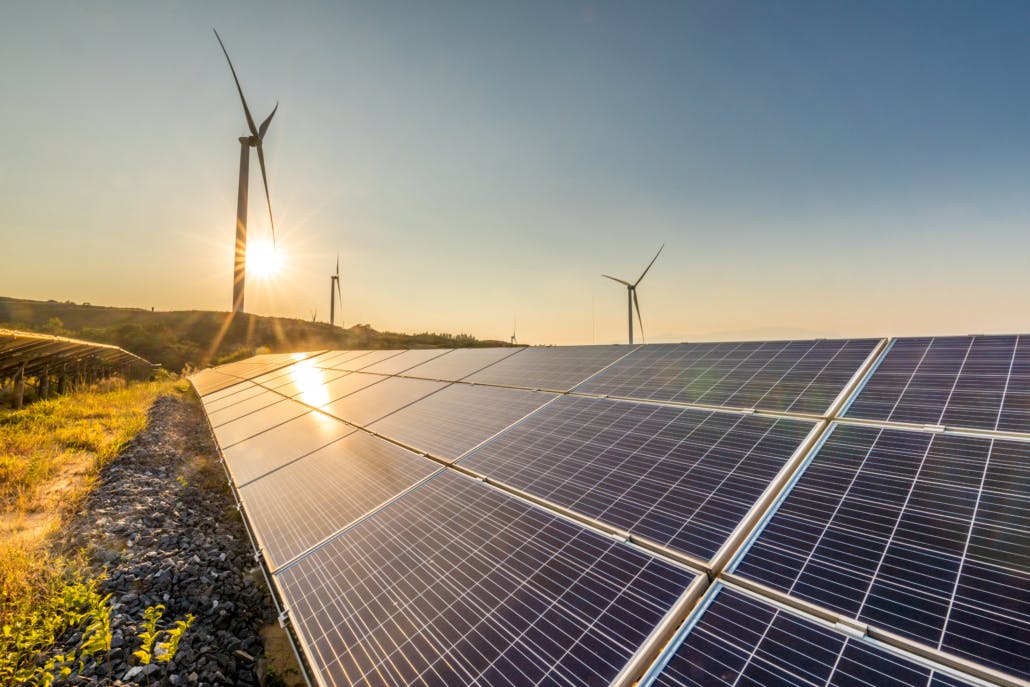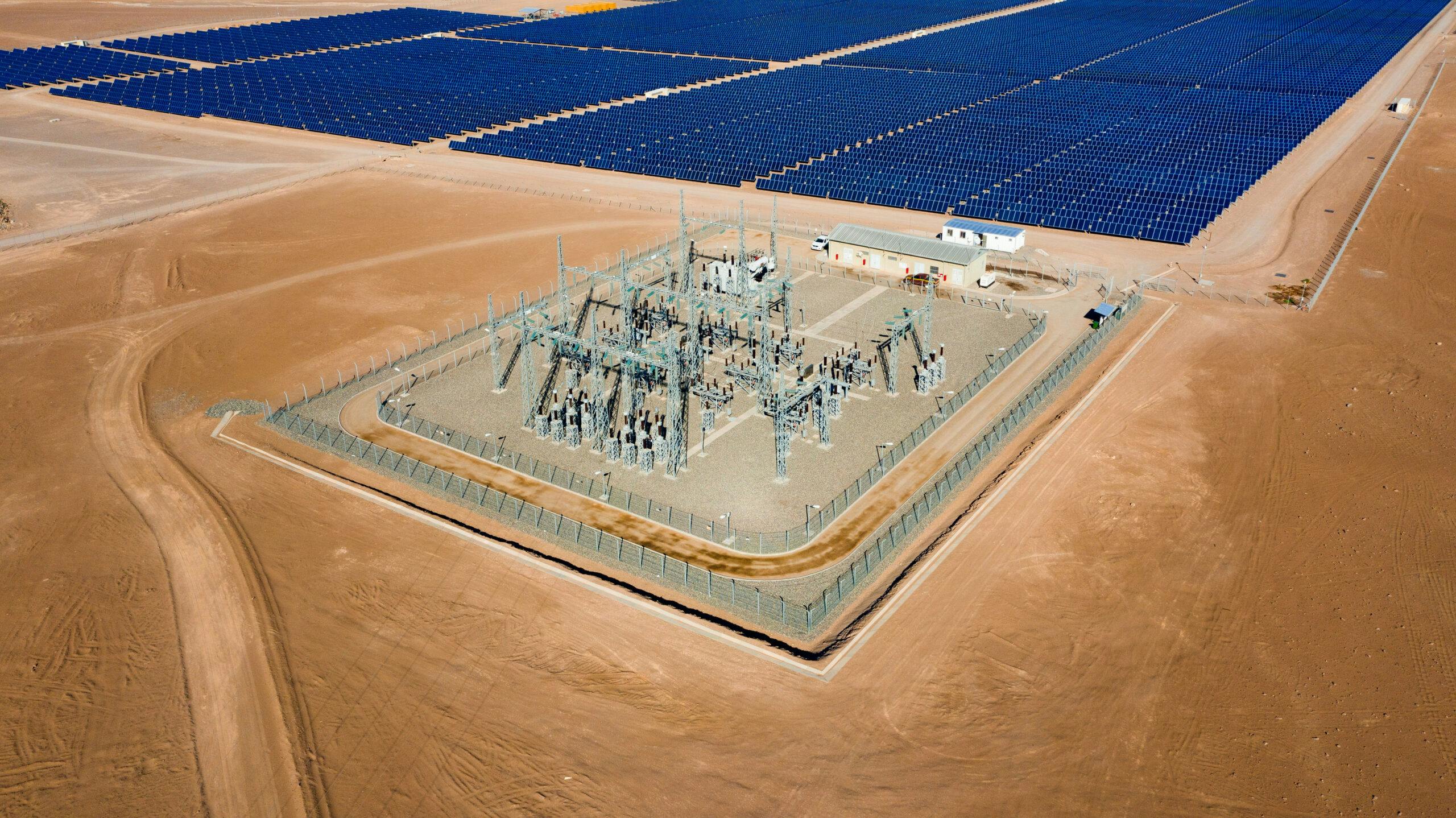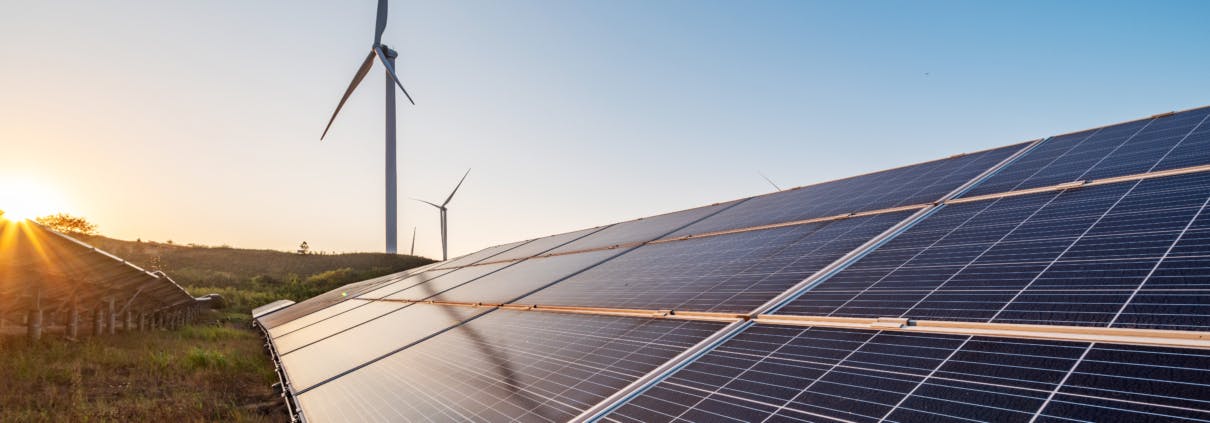2021: BEYOND THE INFLECTION POINT FOR RENEWABLE ENERGY

In recent years, renewable energy has undergone a dramatic decrease in cost and is now more competitive than fossil fuels in many markets. In 2021, we believe that this decline, combined with sweeping policy changes across the globe and a renewed corporate focus on sustainability in the wake of the Covid-19 pandemic, will lead to a massive global growth opportunity in renewable energy. Here’s why.
THE US RETURNS TO PARIS
One of the immediate priorities for the newly inaugurated Biden-Harris administration is swift action on climate change. On his first day in office, President Joe Biden signed a sweeping executive order to rejoin the Paris Agreement, as part of a plan for the US to hit zero emissions by 2050. The agreement, which the former administration officially withdrew from in 2020, aims to limit global warming to 1.5 degrees Celsius compared to pre-industrial levels by reducing carbon dioxide and other greenhouse gas emissions through the year 2050.
According to a recent note by Jahnavi Nadipi, a Platts Analytics North American power markets analyst, the US will need as much as 238GW more solar and wind power to meet the agreement’s targets – more than double its current installed capacity. To meet this, President Biden has put in place an ambitious investment target of $2 trillion in clean energy infrastructure over the next four years, boosting the near-term outlook for the renewables sector.
CHINA PLANS TO DOUBLE GLOBAL RENEWABLES CAPACITY
At the end of 2020, Chinese President Xi Jinping set out concrete plans to achieve net-zero carbon dioxide emissions for the first time. The country plans to achieve 1.2 TW of renewables capacity by 2030 – an amount equal to the current global total installed solar and wind capacity. The China Photovoltaic Industry Association (CPIA), the country’s main solar industry group, says it expects to see 70-90GW of new solar added each year up to 2025.
THE WORLD AIMS FOR NET ZERO
Beyond the world’s two largest economies, a wave of commitments from other Paris Agreement signatories, including Canada, India, the European Union, Japan, South Africa, and South Korea, have put the Agreement’s 1.5°C goals within striking distance for the first time, according to the Climate Action Tracker (CAT). In a clear signal to financiers, investors, manufacturers, and project developers, governments are now seeking a faster expansion of renewable power sources in order to meet these tighter targets.
AUCTIONS UNDERWAY IN LATIN AMERICA
The recent pace of clean energy growth in Latin America shows no sign of abating. The Colombian government will offer 5,000 MW of capacity in its third renewable energy auction in the first quarter of this year, taking it from less than 50 MW of installed renewables in 2018 to more than 2.8GW by the end of 2022. Meanwhile, in May, Chile will launch an auction for 2.31 TWh of renewables and storage.
RENEWABLE DEALMAKING PICKS UP
The increased political impetus to meet ambitious climate targets hasn’t passed energy companies and utilities by, and many spent 2020 shifting their focus to sustainability-focused business. In Latin America, Atlas Renewable Energy signed a total of 660MW in corporate PPAs – a record figure, making us the top developer in the region by contracted volume for 2020, according to Bloomberg.
In March, we signed the largest-ever solar energy purchase and sale contract in Brazil with mining conglomerate Anglo American, helping it achieve its strategy to use 100% renewable energy for its operations in Brazil as of 2022. In June, we signed a 15-year agreement with material science giant Dow to provide it with clean energy from our 187MWp Jacaranda solar project, located in the municipality of Juazeiro in Bahia State, Brazil. The plant will generate 440GWh per year, which is enough to supply power to a city of over 750,000 inhabitants, enabling Dow to get closer to its renewable energy sourcing goals.
This is a global trend. In the US, Dominion Energy and Duke Energy shelved their joint Atlantic Coast Pipeline project, while Dominion has sold its gas transmission and storage business and announced a series of additions to its solar portfolio. Meanwhile, French oil major Total’s energy transition strategy continues apace, with the acquisition of a 20% stake in India’s Adani Green Energy, the world’s biggest solar developer.
INVESTORS FLOCK TO CLEAN ENERGY
2020 saw global stock markets roiled by the Covid-19 pandemic, but the clean energy industry held firm, with the S&P Global Clean Energy Index notching up an impressive 135.4% increase over the year. According to the International Energy Agency (IEA), shares in renewable equipment makers and project developers outperformed most major stock market indices over 2020, while the value of shares in solar firms has more than doubled since December 2019. With Goldman Sachs announcing its expectation that renewable power will become the largest area of expenditure in the energy sector in 2021, surpassing upstream oil and gas for the first time, we expect this trend to accelerate, as major investors seek to capitalize on the upswing in demand.
LARGE ENERGY USERS GO GREEN
Commitments by major corporates to reduce their emissions have trickled in over recent years, but 2020 saw market leaders convert promises into action – driving up demand for further renewable capacity. In May 2020, 155 companies — with a combined market capitalization of over $2.4 trillion —signed a statement urging governments around the world to align their COVID-19 economic aid and recovery efforts with current climate science. In July, Microsoft along with AP Moeller-Maersk, Danone, Mercedes-Benz, Natura & Co., Nike, Starbucks, Unilever, and Wipro created the Transform to Net Zero initiative, with the tech firm committing to develop a portfolio of 500 megawatts of solar energy projects in under-resourced communities in the US. Meanwhile, Google pledged in September to achieve 100% renewable energy by 2030, while Apple’s newly-launched Supplier Clean Energy Program has seen 71 manufacturing partners in 17 countries commit to 100% renewable energy for the tech giant’s production as it commits to transitioning the electricity used across its entire manufacturing supply chain to clean sources by 2030.
RECORD INCREASES IN PROJECTS COMING ONLINE
During the height of the pandemic, when overall power demand sank, renewable power’s share of the grid surged, and this trend is set to continue. According to the IEA, almost 90% of new electricity generation in 2020 was renewable, with just 10% powered b
y gas and coal, putting green electricity on track to become the largest power source by 2025, displacing coal. In the US, the Energy Information Administration’s (EIA) latest inventory of electricity generators, developers, and power plant owners shows 39.7 GW of new electricity generating capacity will start commercial operation in 2021, with solar accounting for the largest share of new capacity at 39%, followed by wind at 31%.
COVID RECOVERY MONEY HEADS TO RENEWABLES
Despite the pandemic and consequent global recession, decarbonization plans continued through 2020, demonstrating the acceptance of the need for climate action no matter the economic backdrop. With Covid-19 stimulus money now on the table, the International Finance Corporation (IFC) says that supporting low carbon investment and renewables generation capacity could generate a US$10.2tn investment opportunity, create 213 million jobs, and reduce greenhouse gas emissions by 4bn tons by 2030.
FUELING THE NEW NORMAL – NO GOING BACK
Taken together, all of these trends indicate a strong 2021 – and beyond – for the renewables sector. As the global economy charts, a path toward a new normal, clean energy can power a green recovery that leaves no-one behind. And with increased demand, a favorable regulatory framework, and rising investor appetite for green projects, we believe that the outlook for the industry is brighter than ever before.
Share This Entry


